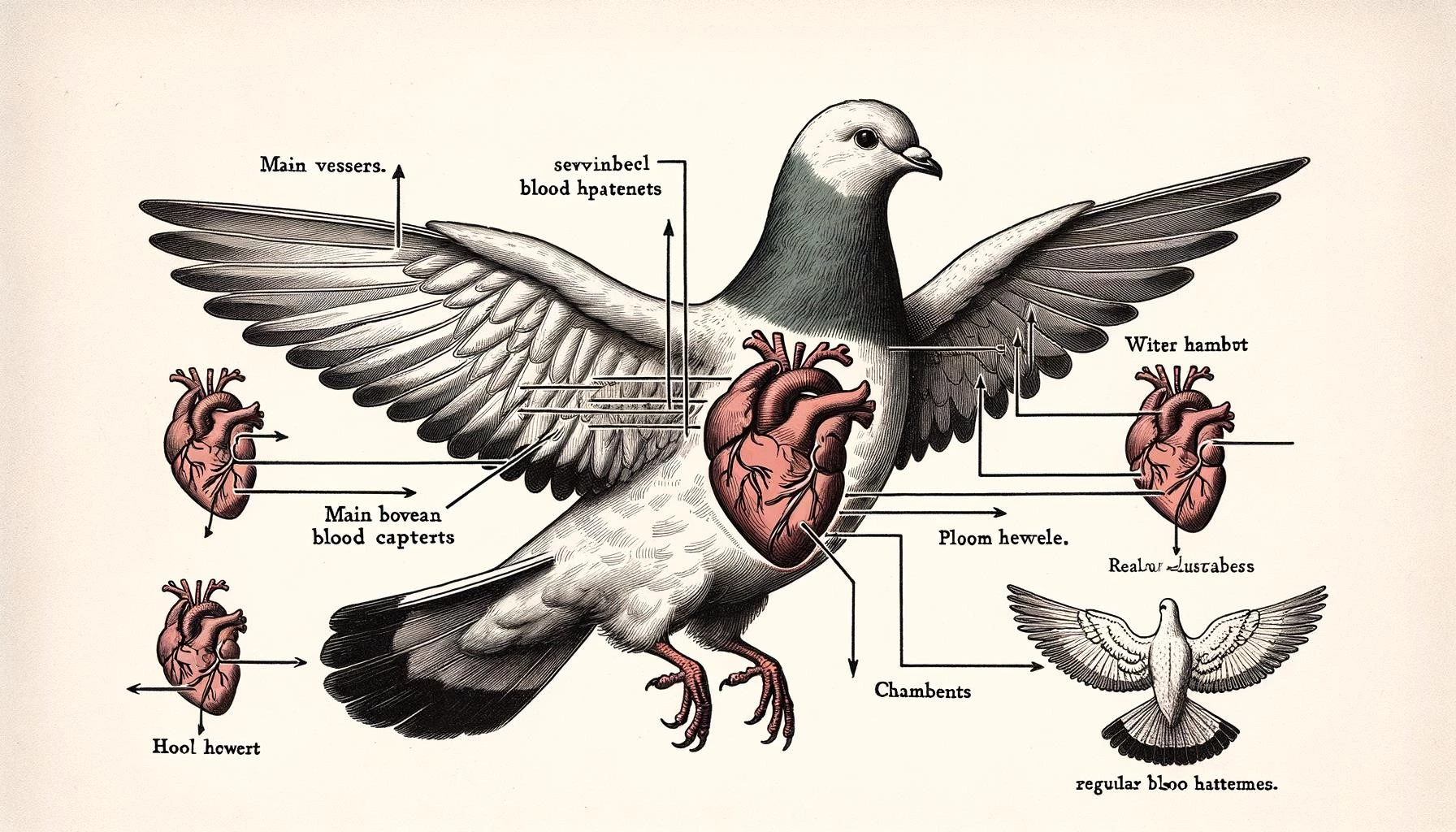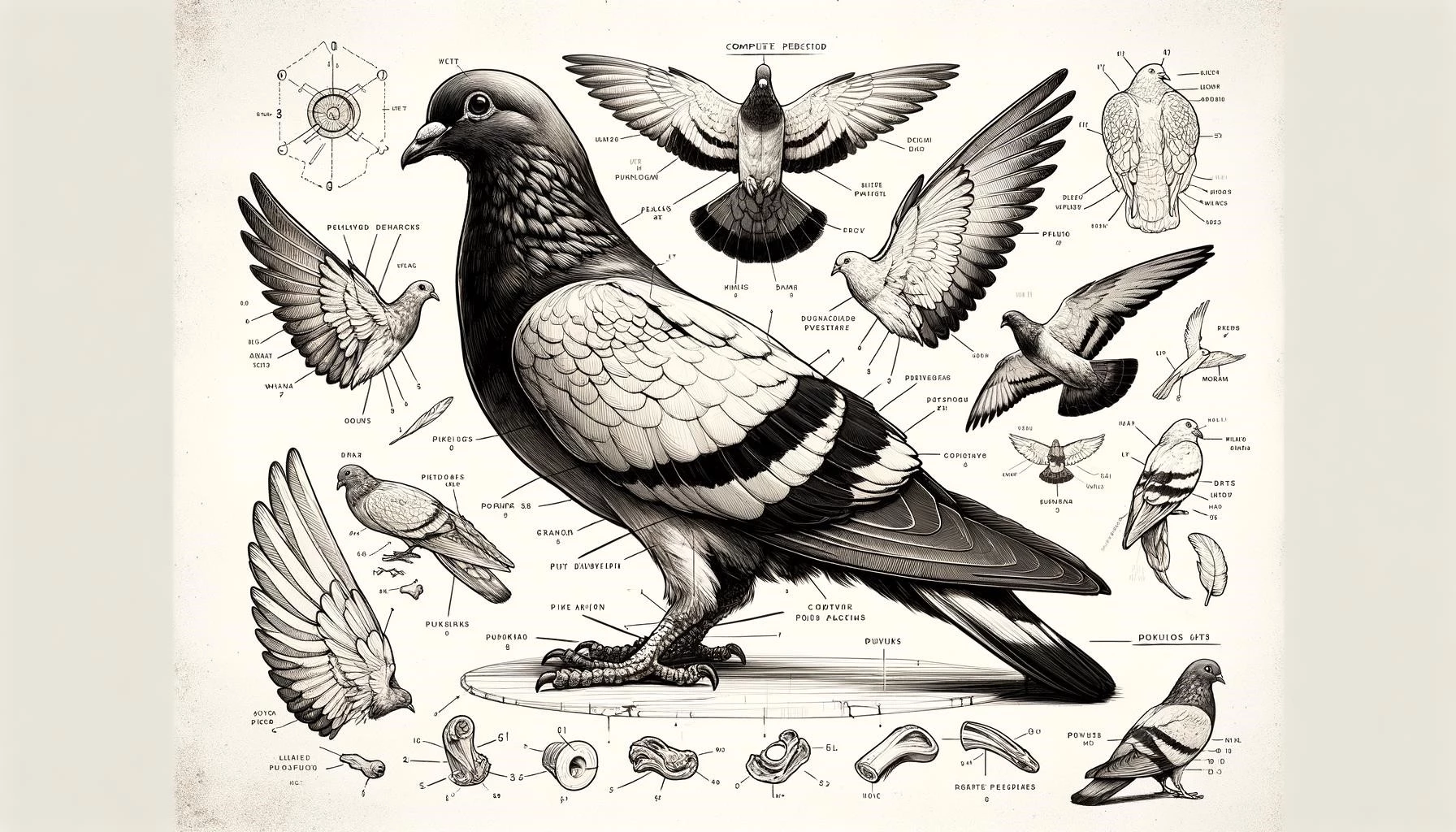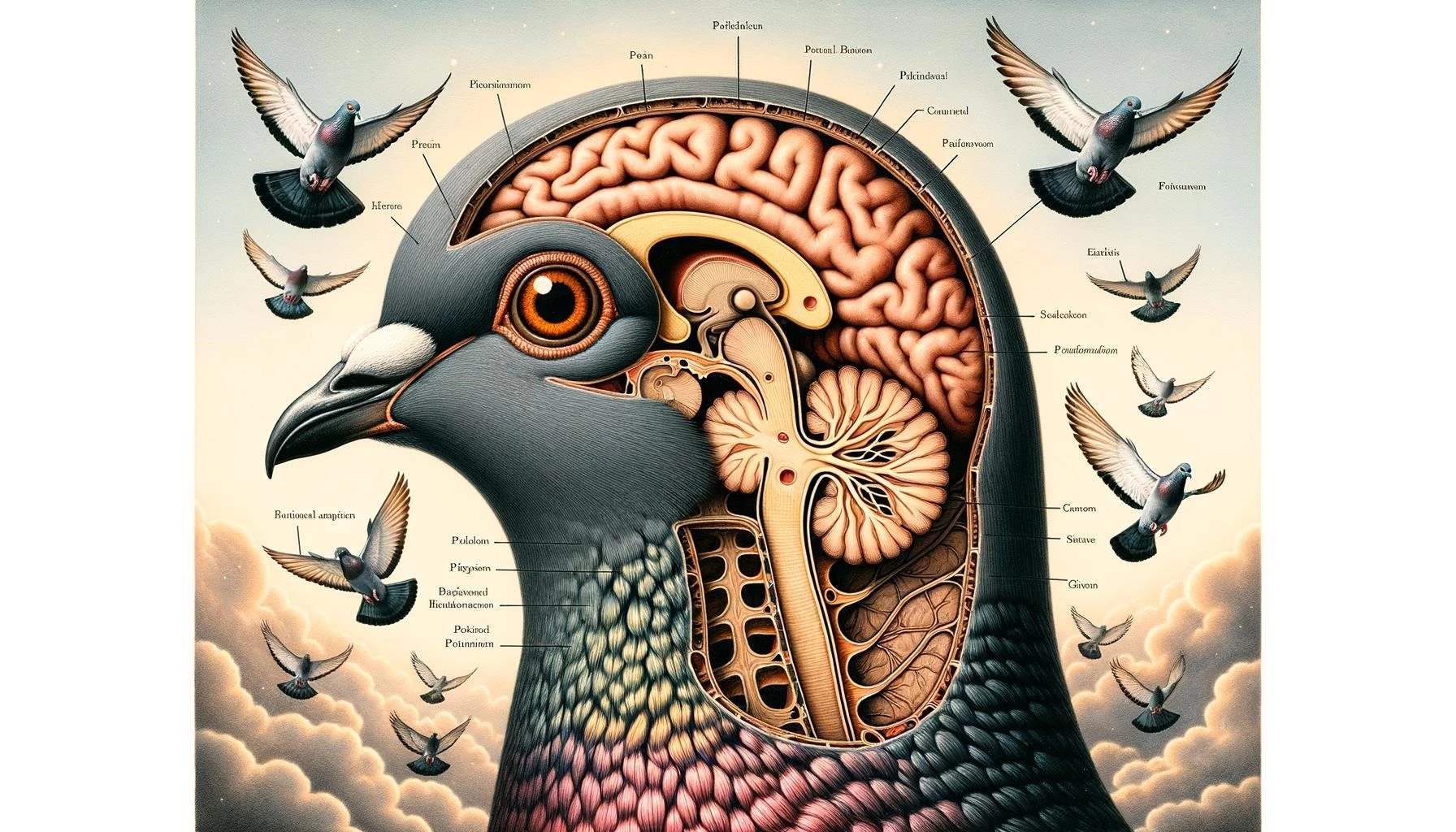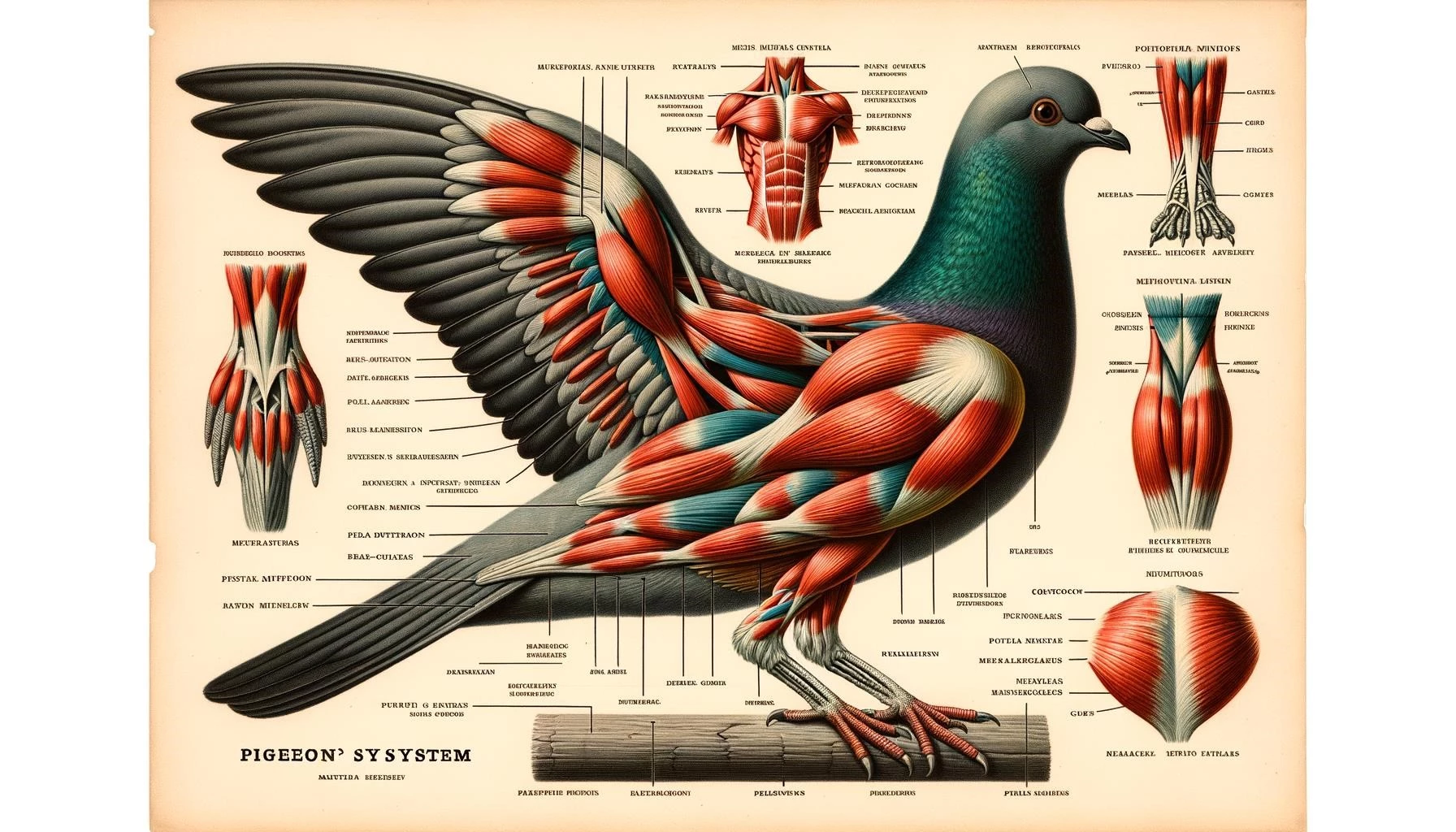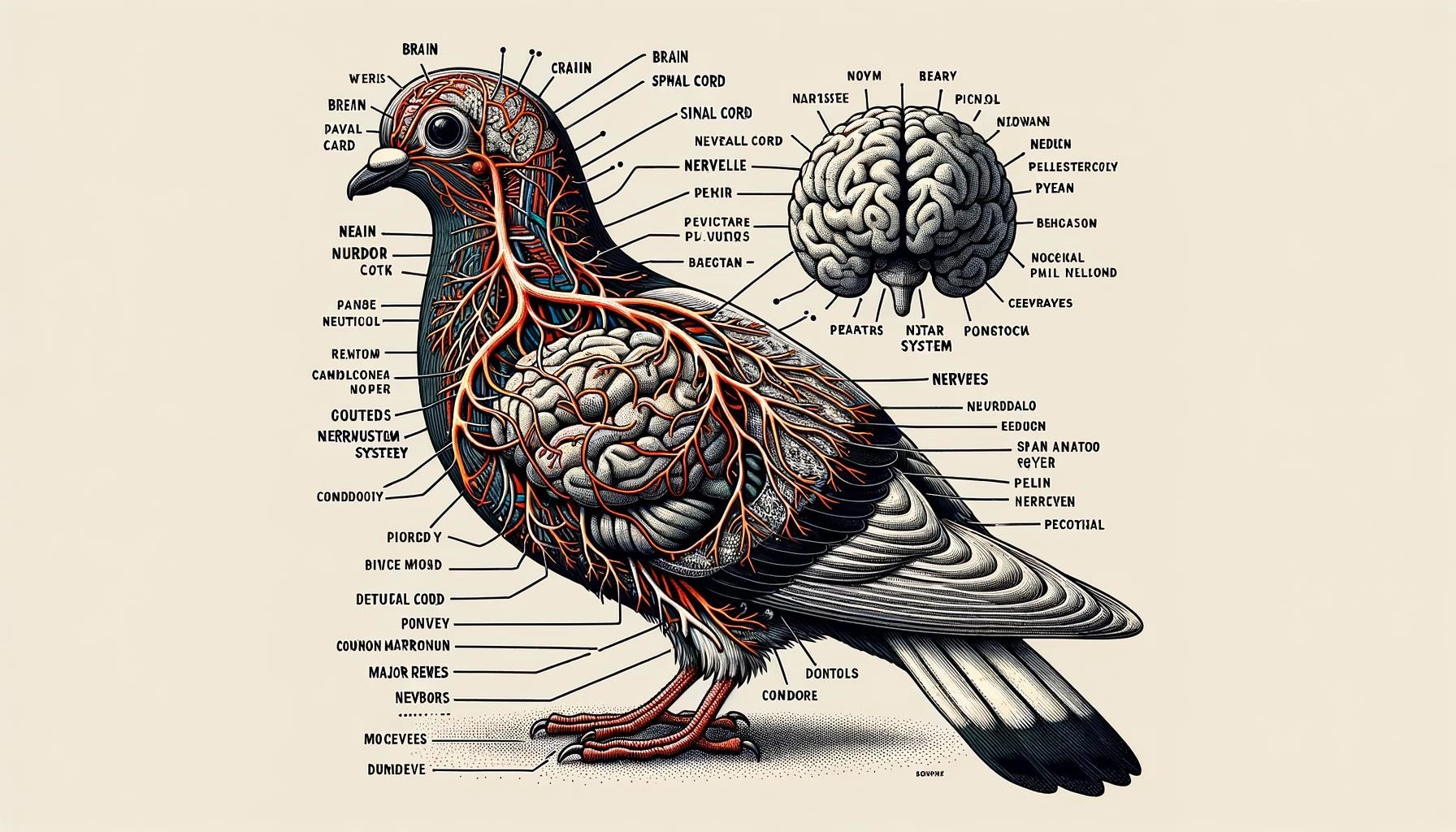Pigeons, like all birds, have a unique and fascinating cardiovascular system. Their hearts play a crucial role in pumping oxygenated blood throughout their bodies, allowing them to maintain their high levels of energy and endurance. In this article, we will explore the anatomy and function of the pigeon heart, shedding light on its remarkable capabilities and adaptations. We will also address common questions about pigeon hearts and their unique characteristics.
Key Takeaways
- Pigeons have a 4-chambered heart, similar to other birds and mammals, consisting of two atria and two ventricles.
- The pigeon heart is large, triangular, and compact, located midventrally in the thorax.
- The heart plays a crucial role in pumping oxygenated blood to the body and de-oxygenated blood to the lungs.
- Pigeon hearts are well-adapted to support the high levels of activity and endurance required for flight.
- The cardiovascular system of pigeons is essential for maintaining their body temperature and overall health.
Anatomy of the Pigeon Heart
The heart of a pigeon is remarkable in its size and structure. It is large-sized, reddish in color, triangular, and compact. The pigeon heart is located midventrally in the thorax and is enclosed in a thin, transparent membrane called the pericardium.
Similar to other birds and mammals, pigeons have a 4-chambered heart. This means that their heart is divided into two atria and two ventricles. The atria receive blood returning to the heart, while the ventricles pump the blood out to the body and lungs.
The right atrium of the pigeon heart receives de-oxygenated blood from the body through the vena cava. From the right atrium, the blood flows into the right ventricle, which then pumps the blood to the lungs for oxygenation. Once the blood is oxygenated, it returns to the heart via the left atrium. From the left atrium, the blood enters the left ventricle, which then pumps the oxygenated blood to the rest of the body.
The intricate network of valves within the pigeon heart ensures that blood flows in the correct direction, preventing any mixing of oxygenated and de-oxygenated blood. This separation is crucial for maintaining efficient oxygen delivery to the bird’s tissues and organs.
Function of the Pigeon Heart
The pigeon heart functions to supply oxygenated blood to the body and tissues while simultaneously returning de-oxygenated blood to the lungs. This continuous circulation is vital for providing oxygen and nutrients to support the pigeon’s high levels of activity and energy expenditure.
During flight, pigeons require a tremendous amount of energy, and their hearts play a crucial role in meeting this demand. The large size of the pigeon heart allows it to pump a significant volume of blood with each beat, ensuring an adequate supply of oxygen to fuel the bird’s continuous flight.
Furthermore, the 4-chambered structure of the pigeon heart prevents the mixing of oxygenated and de-oxygenated blood. This separation is essential for maintaining the high metabolic demands of the bird and supporting its ability to fly for long distances without tiring.
The cardiovascular system of pigeons also plays a role in regulating their body temperature. As warm-blooded animals, birds, including pigeons, maintain a constant body temperature. The efficient circulation of blood by the heart helps distribute heat throughout the body, enabling pigeons to regulate their internal temperature and stay warm even in colder environments.
Conclusion
The pigeon heart is a remarkable organ that enables these birds to engage in their unique and demanding behaviors, such as flying for long distances and maintaining a constant body temperature. With its large size, triangular shape, and 4-chambered structure, the pigeon heart efficiently pumps oxygenated blood to nourish tissues and organs and returns de-oxygenated blood to the lungs for reoxygenation.
Understanding the anatomy and function of the pigeon heart provides insight into the cardiovascular adaptations that allow these birds to thrive in their natural environment. This knowledge also highlights the importance of a healthy heart for overall avian health and well-being.




